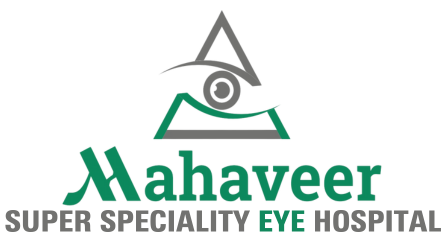As summer approaches and outdoor activities increase, it’s crucial to remember that ultraviolet (UV) rays from the sun can significantly impact your eye health. While many are aware of the harmful effects of UV rays on the skin, the eyes are equally vulnerable to damage. At Mahaveer Eye Hospital, we emphasize the importance of protecting your eyes from UV radiation to maintain optimal vision and overall eye health.
Understanding UV Rays and Their Impact
Ultraviolet rays are a form of electromagnetic radiation that comes from the sun. There are three types of UV rays: UVA, UVB, and UVC. UVA rays penetrate deep into the eye and are associated with long-term damage, including the development of cataracts and macular degeneration. UVB rays affect the outer layers of the eye and are known to cause more immediate issues such as photokeratitis (a condition similar to sunburn, but affecting the cornea). UVC rays are the most dangerous but are mostly absorbed by the Earth’s atmosphere and do not reach us.
Short-term effects of UV exposure can include:
- Photokeratitis: Often referred to as “snow blindness” or “sunburn of the eye,” this condition can cause pain, redness, tearing, and temporary vision loss.
- Conjunctivitis: Also known as “pink eye,” can be aggravated by UV exposure, causing discomfort and inflammation.
Long-term effects can be more severe:
- Cataracts: Clouding of the eye’s lens, which can lead to blurry vision and eventually vision loss if left untreated.
- Macular Degeneration: Deterioration of the central part of the retina (macula), leading to loss of central vision.
- Pterygium: A growth on the eye’s surface that can affect vision and cause discomfort.
Protection and Prevention
Protecting your eyes from UV rays is essential to prevent both short-term discomfort and long-term damage. Here are several effective strategies to safeguard your vision:
1. Wear UV-Protective Sunglasses: Choose sunglasses that block 100% of UVA and UVB rays. Look for labels indicating full UV protection. Polarized lenses are also a good option as they reduce glare and provide additional protection against UV radiation.
2. Use Wide-Brimmed Hats: Hats with wide brims can provide an extra layer of protection by blocking sunlight from reaching your eyes and reducing UV exposure.
3. Seek Shade: Whenever possible, stay in the shade, especially during peak sunlight hours (10 a.m. to 4 p.m.). UV rays are strongest during these times and can be more intense near reflective surfaces like water, sand, and snow.
4. Ensure UV Protection for Children: Children’s eyes are particularly sensitive to UV rays. Make sure they wear sunglasses with UV protection and use hats to shield their eyes from direct sunlight.
5. Get Regular Eye Exams: Routine eye examinations at Mahaveer Eye Hospital help in early detection and management of UV-related eye conditions. Our ophthalmologists use advanced technology to assess your eye health and provide tailored advice on UV protection.
Conclusion
UV rays pose a significant threat to eye health, but with the right precautions, you can protect your eyes and enjoy the outdoors safely. At Mahaveer Eye Hospital, we are committed to educating our patients about the risks of UV exposure and offering solutions to safeguard your vision. By incorporating UV protection into your daily routine, you can prevent potential damage and ensure your eyes remain healthy and vibrant for years to come. If you have any concerns about your eye health or UV protection, schedule an appointment with us today. Your eyes deserve the best care and protection.




Leave A Comment